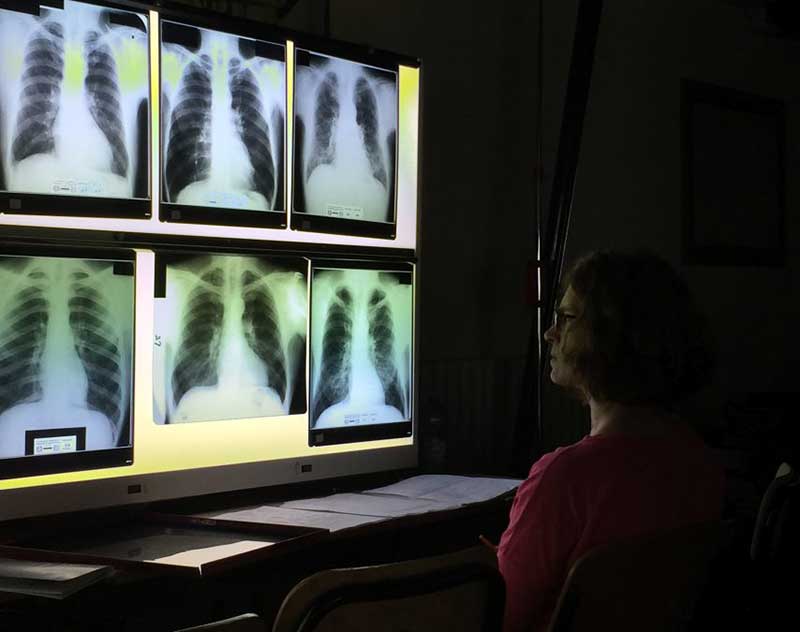5,200+ comments from across the country support strengthening silica dust rule as comment period concludes
FOR IMMEDIATE RELEASE
September 12, 2023
CONTACT
Trey Pollard, trey@pollardcommunications.com
COAL COUNTRY – Last night at midnight EST, the 45-day comment period on the Mine Safety and Health Administration’s draft rule to protect coal miners from exposure to respirable silica wrapped up. Throughout the comment period, over 5,200 Americans added their voice to the effort to strengthen the rule and close serious loopholes to crack down on the principal cause of the resurgence of deadly black lung disease.
“Many of our members have sons and other loved ones working in the mines,” said the comment from the Kanawha County (WV) chapter of the Black Lung Association. “We submit these comments today out of our love and concern for them. It’s too late for those of us who are already disabled, but we can tell our stories so that what happened to us doesn’t have to happen to anybody else.”
“Thousands died from black lung as miners and their families waited years for MSHA to finally take action to curb silica dust,” said Willie Dodson, Central Appalachian Field Coordinator for Appalachian Voices. “This is likely the only opportunity we’ll have to fight for a strong rule that actually addresses the problem, so it is encouraging that so many people have spoken up to close the loopholes in the draft rule and hold coal companies accountable. Now, it is critically important that MSHA listen to the people fighting for miners’ lives and not the coal companies that caused this crisis in the first place. MSHA has the chance to improve the rule so that it does the job it is supposed to do, and it is past time that they do so.”
“In the face of so much unnecessary suffering and death, the agency’s response with this proposed rule is to ignore their Congressional mandates and to very slightly alter the status quo,” said Appalachian Citizens’ Law Center in its comment (available here). “It is impossible to read MSHA’s own projections and arrive at a different conclusion.”
More than 5,200 Americans signed onto a petition created by Appalachian Voices and Appalachian Citizens’ Law Center backing a stronger rule. Other comments include those from advocates for miners with black lung like the National Black Lung Association, the United Mine Workers of America, Appalachian Citizens’ Law Center, West Virginia attorney Sam Petsonk, the National Coalition of Black Lung and Respiratory Disease Clinics, and Appalachian Voices. Several of the improvements to the rule highlighted in the comment process include:
- Enforce the rule based on more frequent, routine sampling done by MSHA, not coal operator sampling conducted with easily manipulable sampling technology;
- Create stronger criteria for the issuance of citations and provide clear penalties for those violating the rule, as no penalties are currently enumerated in the draft;
- Include provisions to temporarily shut down dangerous mines in violation of silica dust limits rather than allowing them to stay open and rely on miners to use uncomfortable and ineffective respirators around the clock;
- Create a technology-forcing rule that will adopt and phase-in better sampling technology
“MSHA must ensure that coal companies are not able to skirt the rule,” said the comment from the National Black Lung Association and four Black Lung Association local chapters. “The current rule proposes a heavy reliance on operator sampling but as many of us miners have previously expressed, there is always a pressure to do what it takes to have a sample be compliant.”
The silica standard for coal miners has not been updated since 1985. Since then, mining methods have changed as larger, more accessible coal seams have been exhausted. Miners now must cut through more rock, leading to more exposure to silica dust that is 20 times more toxic than coal dust and causes the most severe forms of black lung even after fewer years of exposure. Based on scientific evidence, health experts and government agencies have repeatedly concluded that this silica dust exposure is a major cause of the black lung epidemic and that the outdated MSHA silica standard was woefully ineffective at protecting miners from this threat. Now, in Central Appalachia, one in five tenured miners has black lung disease and one in 20 has the most severe and totally disabling form of black lung.
Over a decade ago, in 2009, Appalachian Citizens’ Law Center (ACLC) petitioned MSHA to establish a dust standard for respirable crystalline silica. While MSHA responded and stated an intention to publish a proposed standard by April 2011, the rule was never promulgated and a decade of inaction followed. In 2016, the Occupational Safety and Health Administration established a reduced silica standard for other occupations, but because MSHA oversees mining regulations, the change meant miners had less protection from silica than any other group of workers. In 2021, ACLC again petitioned for a silica dust rule and the rule was reportedly drafted and submitted to the Office of Management and Budget in January, where it sat until this summer.
Three hearings were held on the draft rule in which the sentiments expressed in these comments were echoed. For example, at the hearing in Beckley, West Virginia, miners and advocates fighting for a stronger rule overwhelmingly outnumbered those pushing for delays at other hearings.



